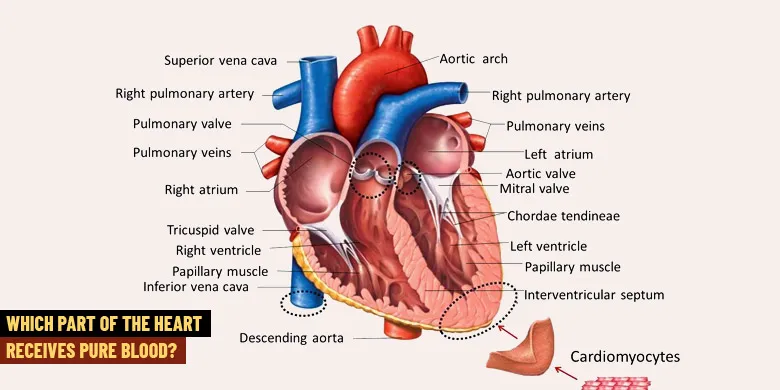Which Part of the Heart Receives Pure Blood?
Rev up your mind for sharp answers to the following questions:
- Which part of the heart receives pureblood?
- What is pure blood?
- How does the pure blood help you survive?
- What is the color of this type of circulatory fluid?
Before proceeding to and touching upon the question, “Which part of the heart receives pure blood?” let’s define what pure blood is. It is the supply of so-called pure blood that helps each cell extract energy from the available food particles – the product of digestion – and execute various maintenance, synthetic, growth, and movement related functions.
If the magically powerful natural pump of your body, the heart, stops working, the cells start dying. When this happens in the brain, it leads to the death of the master organ and, thus, the individual might be declared legally dead.
What Is Pure Blood?
The pure blood is just another term for the oxygenated blood. This oxygenation of the blood takes place in the lungs. While breathing, you inhale oxygen-rich air and exhale carbon dioxide-containing air. The oxygen in the inhaled air passes to the deoxygenated blood to make it rich in oxygen.
The oxygen-rich or the pure blood is carried to the heart via the pulmonary veins. Traditionally, there are four pulmonary veins, which receive blood from different lobes of the lungs and drain it into the left atrium through four separate Ostia.
Here it is noteworthy that pulmonary and umbilical veins are the only veins that are used to carry oxygenated blood towards the heart.
What Is the Colour of the Pure Blood?
You might have experienced that the blood flowing through the veins visible on your skin is bluish in appearance. It is the deoxygenated or so-called impure blood flowing towards the heart. This “impurity” is in the sense that it is devoid of oxygen. When it gets rich in oxygen in the lungs , it assumes a bright red colour. So, the color of the pure blood is bright red.
How does a higher concentration of oxygen render the blood red coloration? The fact is that the red color comes from the oxygen carrying protein, called hemoglobin. When oxygen is bound to this iron-containing protein, it becomes bright red, thus giving the same hue to the blood.
Which Part of the Heart Receives Pure Blood?
Among the four chambers of your heart, it is the right atrium which receives blood collected from different parts of the body through the superior vena cava and the inferior vena cava. The circulatory fluid is then passed on to the right ventricle, located beneath the right atrium. From there, it leaves the heart and enters the pulmonary circulation through the pulmonary artery.

The pulmonary circulation is one of the two components of the cardiovascular system, the other being the systemic circulation. While the systemic circulation distributes the blood throughout the body, the pulmonary circulation is responsible for the purification or oxygenation of the blood.
An insufficient supply of oxygen to body cells leads individuals to feel breathless and extremely tired. This may appear even without any physical exertion. Moreover, you must note that shortness of breath occurs without other classic symptoms of heart attack, such as chest pain.
After getting purified, the oxygen-rich blood leaves the pulmonary circulation to re-enter the heart through the left atrium. So, the part of the heart that receives pure blood is the left atrium.
The left atrium then passes the pure blood on to the left ventricle. From there, it enters the aorta, the largest artery in your body, which divides and subdivides to distribute the blood throughout the body.


